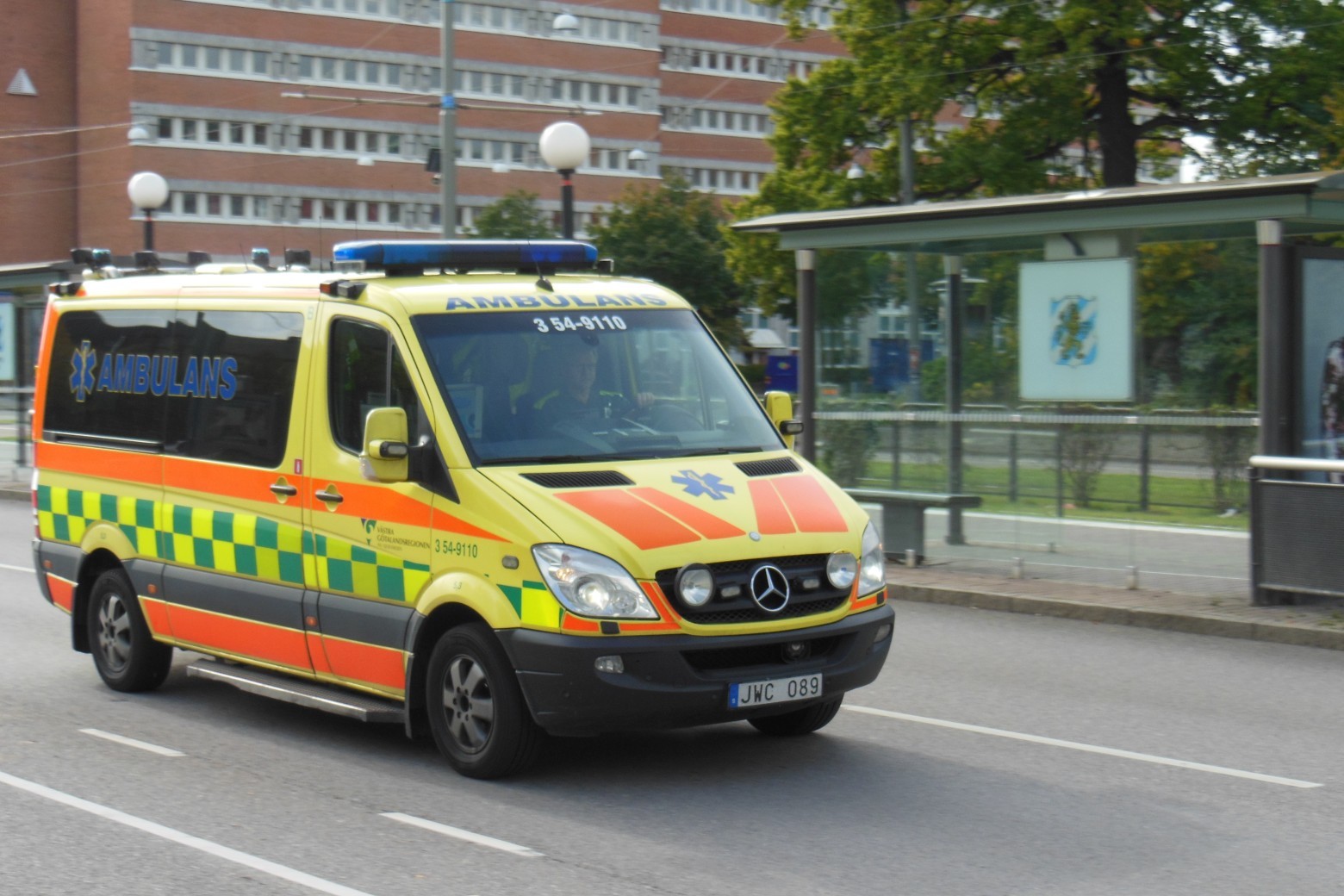The ambulance will contact the drivers through the car radio.

Ambulance car in Gothenburg. Photo: Albin Olsson
According to the rules of the road, when a vehicle approaches with a flashing blue light and a special audible signal, drivers must give way to ensure unimpeded travel of the specified vehicle.
In practice, emergency vehicles often encounter noise on the roads, because some drivers simply do not hear the siren and do not notice a flashing light, for example, if the radio is loud in the cabin. Students at the Royal Institute of Technology in Stockholm (Sweden) have developed an interesting technical solution to this problem. They offered to broadcast a voice message on the FM car radio of nearby cars, drowning out music or any other sound source (USB, CD, DVD, etc.).
According to the rules, the road should be conceded to vehicles that have special color-graphic schemes applied to the outer surfaces, with flashing blue and red flashing lights and a siren, and vehicles accompanied by them.
')
It is useless to fine a driver who does not miss an emergency service car in such a situation, because the main thing is to catch an urgent call, save the patient’s life or put out the fire (for which there is a norm for using flashing lights in traffic regulations). So the main task is to increase the visibility of the "emergency" car. This is the task that the new technical system performs.
Ambulances in Sweden plan to equip emergency radio transmitters that operate in the Radio Data System (RDS) standard. This is a multipurpose standard designed to transmit informational messages over FM broadcasting channels in the UHF band.
The radio responds to RDS control signals automatically. Thus, the car receiver with RDS support will sound an emergency message in whatever mode it works at this moment - to play music files or broadcasting. In normal mode or through Bluetooth headphones, but the driver will hear the signal.
Along with the audible emergency message, a text message will be transmitted to the car stereos. The new technology is called the EVAM System and it is considered part of the inter-car communications technology package - V2V (vehicle to vehicle). To advance the technology at the Royal Institute of Technology Stockholm formed a startup H & E Solutions.
Technology inventors say that it will also improve road safety, because recently, due to technical progress in sound insulation systems (helmets, closed headphones, cars), the number of accidents has increased due to the fact that drivers do not hear the sound of sirens. “Often, the driver has only a few seconds to react and give way to an emergency vehicle,” said Mikael Erneberg, one of three author development students who study industrial engineering at university with fellow students. “The optimal warning time is between 10 and 15 seconds.” The new system will be included in advance, so that the driver will have more time to prepare for the maneuver. The timing for turning on the alert is calculated taking into account the road traffic: on highways, the alert operates in a larger radius than in a busy city.
Tests of the new system in Stockholm will begin on a small number of ambulances in the I quarter. 2017
Entrepreneurs from the EVAM System say that the RDS alert system can also be used to warn of accidents on the road. According to their assessment, such alerts will be heard by drivers of about 2/3 of cars on the road.
Apparently, the car stereo in all modern cars necessarily support the RDS standard, so 66% is a fairly realistic estimate, which excludes only the owners of old cars and those who drive with the radio off.
Perhaps, in the future, the technology will be used outside Sweden, in other countries. And not only for ambulances, but also for other emergency services. For example, in the Russian Federation, special signals are allowed to use fire brigade, police, ambulance, military traffic police, emergency services, military police, national guard, Investigation Committee, FSB (207 cars), State Courier Service (60), Ministry of Interior (98), Prosecutor General’s Office (30), government (32), Kremlin administration (22), Ministry of Defense (20), State Duma (8), Federation Council (5), Ministry of Foreign Affairs (4), Chamber of Accounts (1), Foreign Intelligence Service (1), General Directorate for Special Projects (1), Office of the Presidential Affairs (1) , Rosfinmonitoring (1), Rana (1) and the machines of the heads of the subjects of the Federation.
In principle, the attackers can use the RDS standard. Firstly, for driving along the road without obstacles, demanding from all the vehicles ahead to give way. Secondly, it is convenient to send spam and advertising messages through RDS without paying for airtime on FM radio stations (UPD: they already use it in Russia).
Source: https://habr.com/ru/post/400865/
All Articles